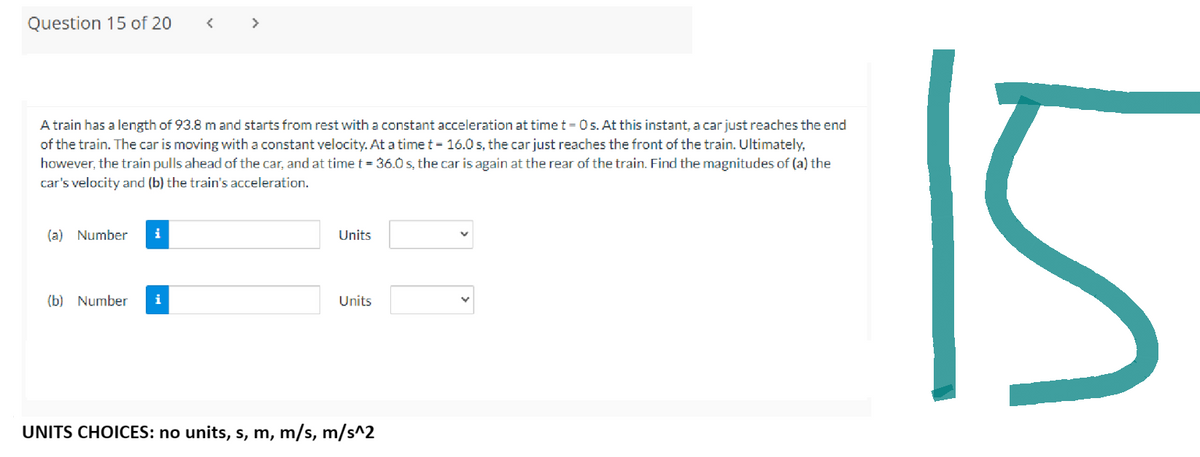A train has a length of 93.8 m and starts from rest with a constant acceleration at time t-Os. At this instant, a car just reaches the end of the train. The car is moving with a constant velocity. At a time t - 16.0s, the car just reaches the front of the train. Ultimately, however, the train pulls ahead of the car, and at time t = 36.0 s, the car is again at the rear of the train. Find the magnitudes of (a) the car's velocity and (b) the train's acceleration. (a) Number i (b) Number Units Units UNITS CHOICES: no units, s. m. m/s. m/s^2
Displacement, Velocity and Acceleration
In classical mechanics, kinematics deals with the motion of a particle. It deals only with the position, velocity, acceleration, and displacement of a particle. It has no concern about the source of motion.
Linear Displacement
The term "displacement" refers to when something shifts away from its original "location," and "linear" refers to a straight line. As a result, “Linear Displacement” can be described as the movement of an object in a straight line along a single axis, for example, from side to side or up and down. Non-contact sensors such as LVDTs and other linear location sensors can calculate linear displacement. Non-contact sensors such as LVDTs and other linear location sensors can calculate linear displacement. Linear displacement is usually measured in millimeters or inches and may be positive or negative.

Step by step
Solved in 2 steps









